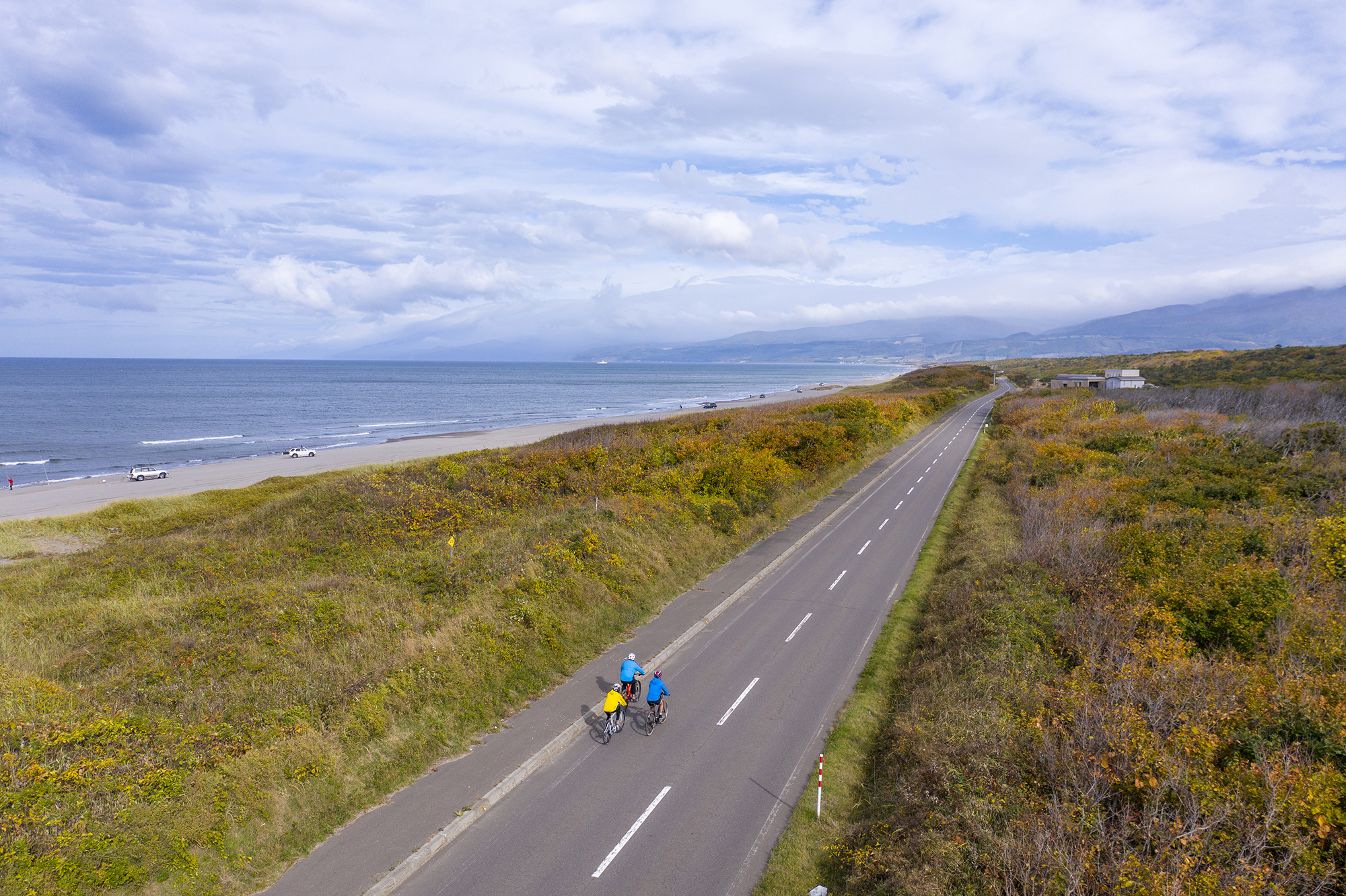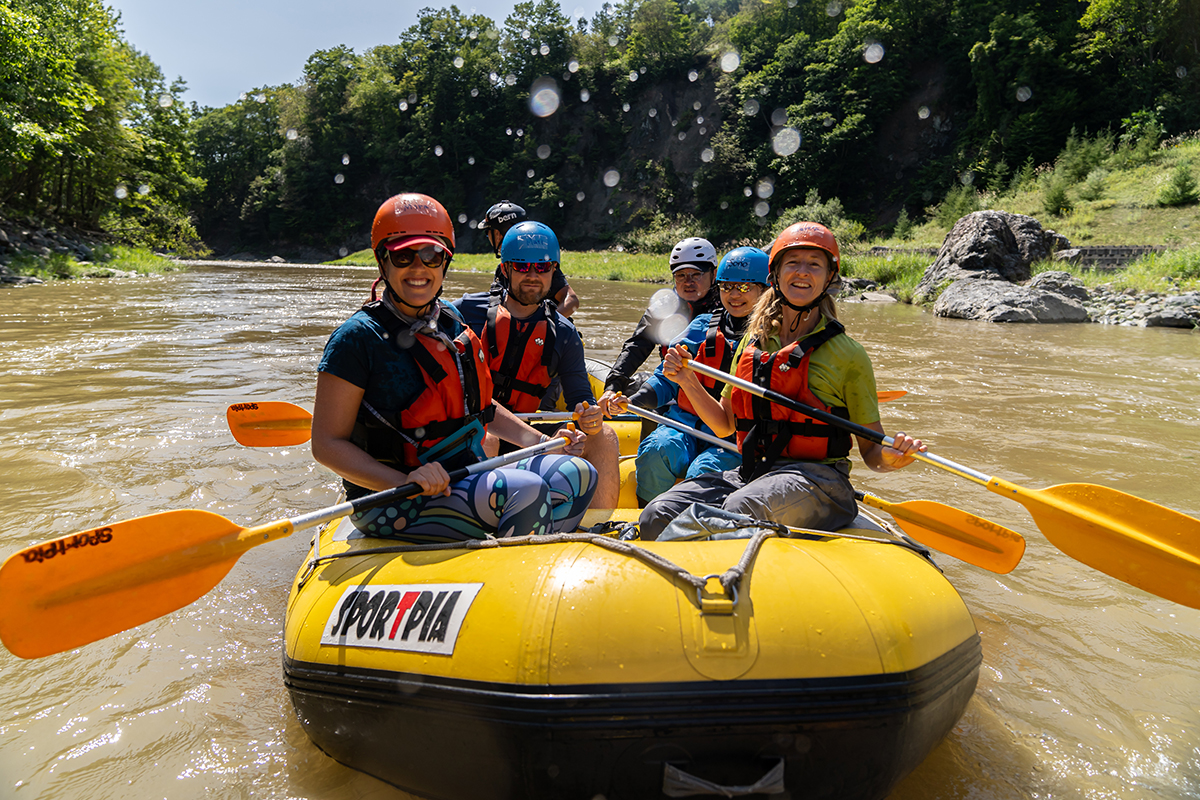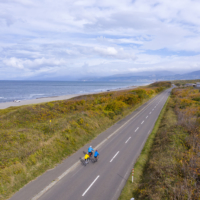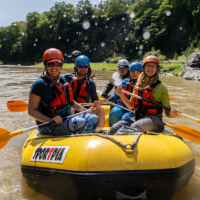For those looking for a place in Japan to experience and feel the vastness of nature and its changing seasons, Hokkaido, Japan’s northernmost island, is the best choice. About the size of Austria, this prefecture accounts for 22% of Japan’s area and offers its lowest population density — along with much more than powdery snow.
Hokkaido prides itself as an attractive destination for adventure travel that provides opportunities to truly feel the charms and uniqueness of places by encouraging people to immerse themselves in — and interact with — the environment. The Adventure Travel Trade Association defines adventure travel as “an experience that involves the combination of nature, culture and physical activity.” Hokkaido can cater to all three, with distinctive seasonal features for travelers looking for once-in-a-lifetime experiences.
Hokkaido Gov. Naomichi Suzuki said in a video message on Adventure Travel Hokkaido, a bilingual information site managed by the Hokkaido Tourism Organization, “Hokkaido boasts natural splendor and diverse seasonal beauty, while its fertile ground provides habitat for many endemic animal and plant species.”
Surrounded by the Pacific Ocean, the Sea of Japan and the Sea of Okhotsk, Hokkaido offers not only fresh seafood, but also ample opportunities for anything from fishing and boating to hiking, skiing and ice diving. The dynamic views of mountains, forests, lakes, wetlands and rivers are worth seeing, but engaging in adventurous activities allows one to appreciate these varied landscapes even more.

The landscapes are home to a diversity of wildlife, including brown bears, red-crowned cranes, Ezo red foxes and Ezo deer (Ezo was the original name of the area and its people before the Japanese arrived). Efforts to preserve the environment have led to the designation of six national parks, five geoparks and 13 Ramsar wetlands, as well as UNESCO’s designation of the Shiretoko Peninsula as a natural World Heritage Site.
But it is not just the environment Hokkaido is committed to preserving. Various efforts have been made to preserve and hand down the indigenous Ainu people’s traditions and culture, which were once threatened in the process of modernization. They have lived in the area since ancient times — long before Hokkaido was officially declared Japanese territory just over 150 years ago.
Via the Hokkaido Tourism Organization website, people can find local operators that offer a variety of tours. These include hiking and other activities, as well as those about the Ainu that show how they coexist with nature.
At Upopoy, the National Ainu Museum and Park in the coastal town of Shiraoi in the prefecture’s southwest, visitors can engage in hands-on activities to experience Ainu culture, such as woodcarving and playing traditional instruments.
A walk along the path taken by Isabella Bird, an English explorer and writer who traveled alone from Tokyo to Hokkaido on foot in 1878, gives insights into the sustainable livelihood of the Ainu and how it may have looked to the pioneering Western traveler. Bird later published a book titled “Unbeaten Tracks in Japan,” which covered her extraordinary expedition in northern Japan.
Japan’s summer is known for heat and humidity that can make it unbearable to be outside on the hottest days of the year. Hokkaido’s climate is cooler and drier, making it possible to enjoy outdoor activities year round. It is also free from the rainy season the rest of the country experiences every June. To promote the various activities and experiences Hokkaido offers, the tourism organization constantly updates its Adventure Travel YouTube channel. It shares dozens of short videos that provide glimpses of the stunning beauty of Hokkaido’s nature and what visitors can do to feel it throughout their bodies.
One of the videos that best describes the breadth of activities travelers can enjoy in Hokkaido is a short movie created for the Adventure Travel World Summit that was held in Hokkaido last year. In addition to rafting and kayaking on the Mukawa River, known for its turbulent waters and steep canyons in central Hokkaido, and cycling in Kamikawa and Soya in the north and Lake Toya in the southwestern area of the prefecture, other activities requiring varying levels of exertion are introduced in the video. It also shows people enjoying cultural activities such as learning road signs, milking at a traditional dairy farm, visiting a fish market, cooking with local ingredients and soaking in a hot spring.

In the video “Cycling and Kayaking in Northern Hokkaido,” people can get a glimpse of what there is to enjoy in the region’s vast nature, especially in the areas of Rishiri, Rebun and Wakkanai. The spectacular coastal landscapes of green gentle hills leading to a cape are enough to attract travelers keen to take in the picture-perfect beauty of Hokkaido not covered with snow. The video also shares other ways to enjoy the island’s gifts, including deer encounters, kayaking and fishing in crystal blue waters, and feasting on the freshest seasonal seafood, such as grilled Atka mackerel.
Toya, Noboribetsu and Niseko in southwestern Hokkaido offer more dynamic landscapes characterized by active volcanoes and Lake Toya, a caldera lake known for its scenic beauty and hot springs. In the video titled “Experience Geological History and Natural Wonders Through Live Volcanoes in Hokkaido,” people can view footage and phenomena showing the Earth is alive.
In the eastern part of Noboribetsu, one can find Jigokudani, or Hell Valley. It is the site of a crater 450 meters in diameter formed by the volcanic activity of Mount Hiyori. Its name comes from the hellish look of the rough rocks in white and reddish brown, the numerous openings and fumaroles, as well as the bubbling hot water reeking of sulfur.
Traveling northwest from Noboribetsu to the area around Lake Toya, part of the Toya-Usu UNESCO Global Geopark, visitors can enjoy such activities as fishing, hiking, cycling and camping. At the same time, people can observe the power and beauty of volcanoes and how communities learned to live with them, via the Konpira Crater Disaster Remains Walking Path or at the peak of Mount Usu, one of Japan’s more active volcanoes, which last erupted in 2000.
Even further northwest is the town of Niseko and Mount Yotei, an active 1,898-meter stratovolcano also known as Ezo Fuji because of its resemblance to Mount Fuji. The area is blessed with abundant spring water that gushes up from many sources that are publicly accessible. The mountains, hills and forests, nurtured by the mineral-rich groundwater, are perfect locations for hiking, cycling and several other outdoor activities.
Needless to say, the area is also a mecca for winter sports. In addition to skiing and snowboarding, various activities such as snowshoeing, ice climbing and ice fishing in tents can be seen in the video “Winter Adventure Travel in Hokkaido, Japan.”
Whichever activity visitors may try, they are sure to be amazed by the magnificent scenes that can only be experienced during Hokkaido’s winter — a contrast of pure white snow against blue sky, snow-covered trees standing as if cut out from white paper, and frozen waterfalls sporting bundles of icicles. Amid such otherworldly views, cranes, owls, deer and other wildlife sometimes appear as well.
The Hokkaido Tourism Organization’s YouTube channel covers so many experiences and activities that everyone can find something appealing. This diversity allows people of all ages, interests and physical abilities to choose the kind of adventure they want. People often want to come back throughout the year, not only because there are different things to do, but also because the same activity can provide new impressions and inspirations, depending on season and location.
Home to great nature and magnificent scenery, Hokkaido is one of the best destinations for taking on adventurous new challenges, making new discoveries and enjoying the beauty of the great outdoors.
For more information, please visit https://en.visit-hokkaido.jp/adventure-travel/
https://www.youtube.com/watch?v=Lbc99AVvs7I&list=PLakCwS7e5hdkiUs22iB3rPcTaPB6IDylP&pp=iAQB
Download the PDF of this article




